Freddie King, a Blues Master, Part I
 The Daddy is thinking about Freddie King today: how he was influenced by Texas guitarists like T Bone Walker and Lightning Hopkins, about his influence on top guitarists in Chicago like Otis Rush, Buddy Guy, Magic Sam, and, later, on guitarists in Europe like Jeff Beck, Keith Richards and Eric Clapton, and how, ironically, he never lost influence with black audience, providing a connection between blues and R&B. In part I, the daddy will provide a brief biography of King.
The Daddy is thinking about Freddie King today: how he was influenced by Texas guitarists like T Bone Walker and Lightning Hopkins, about his influence on top guitarists in Chicago like Otis Rush, Buddy Guy, Magic Sam, and, later, on guitarists in Europe like Jeff Beck, Keith Richards and Eric Clapton, and how, ironically, he never lost influence with black audience, providing a connection between blues and R&B. In part I, the daddy will provide a brief biography of King.In Part II, he will make some points about the blues master that perhaps you didn’t know. Here’s a brief biography of King.
Biography
King was born Frederick Christian in Gilmer, Texas on September 3, 1934. His mother was Ella May King, his father J.T Christian. His mother and her brother, who both played the guitar, began teaching Freddie to play at the age of six. He liked and imitated the music of Lightnin Sam Hopkins and saxophonist Louis Jordan.
He moved with his family from Texas to the Southside of Chicago in 1950. There, at age 16 he used to sneak in to local clubs, where he heard blues music performed by the likes of Muddy Waters, Howlin’ Wolf, T-Bone Walker, Elmore James, and Sonny Boy Williamson. Howlin Wolf took him under his wing (or paw), and Freddie also began jamming with Muddy Waters’ sidemen, who included Eddie Taylor, Jimmy Rogers, Robert Lockwood Jr. and Little Walter.
By 1952 he had married a Texas girl, Jessie Burnett. He gigged at night and worked days in a steel mill. He got occasional work as a sideman on recording sessions. Two bands that he played with during this period were the Sonny Cooper Band, and Early Payton’s Blues Cats. He formed the first band of his own, the Every Hour Blues Boys, with guitarist Jimmy Lee Robinson and drummer Sonny Scott.
In 1953 he made some recordings for Parrot. In 1956 he recorded “Country Boy”, a duet with Margaret Whitfield, and “That’s What You Think”, an uptempo blues. This was for a local label, El-Bee. Robert Lockwood Jr. appeared as a sideman on guitar.
In 1959 he met Sonny Thompson, a pianist who worked for the King/Federal label. In 1960, he himself signed with that label; while there he often shared songwriting credits, and participated in marathon recording sessions, with Thompson. On August 26, 1960, he recorded “Have You Ever Loved a Woman” and “Hide Away”, which were to become to of his most popular tunes. His debut release for the label was “You’ve Got To Love Her with Feeling”. His second release on King/Federal was “I Love the Woman”. “Hide Away” was used as the B side for this disk; that tune, a 12-bar mid-tempo shuffle in E with an infectious theme in the head section, and a memorable stop-time break that featured some robust-sounding work on the bass strings, was destined to become one of his signature numbers. It was an adaptation of a tune by Hound Dog Taylor. It was named “Hide Away” after a popular bar in Chicago. Strictly an instrumental — guitar with rhythm section — it delighted everyone by crossing over and reaching #29 on the pop chart. It was later covered by Eric Clapton, Stevie Ray Vaughan, the Canadian guitarist Jeff Healey, and likely a majority of the bar blues bands on Planet Earth.
 After the success of “Hide Away”, the label, which was presided over by one Syd Nathan, got Freddie and Sonny Thompson to work on making more instrumentals. This they did, producing over 30 of them during the next five years. The following is a partial list: “The Stumble,” “Low Tide,” “Wash Out,” “Sidetracked”, “San-Ho-Zay,” “Heads Up,” “Onion Rings,” and “The Sad Nite Owl”. Freddie became popular with a young white audience, and his playing was a major influence on the upcoming breed of rock guitarists. During this period he was touring frequently along with the big R&B acts of the day such as Sam Cooke, Jackie Wilson, James Brown. His band included his brother Benny Turner on bass; and Tyrone Davis, who would later become known in his own right, was the driver and valet.
After the success of “Hide Away”, the label, which was presided over by one Syd Nathan, got Freddie and Sonny Thompson to work on making more instrumentals. This they did, producing over 30 of them during the next five years. The following is a partial list: “The Stumble,” “Low Tide,” “Wash Out,” “Sidetracked”, “San-Ho-Zay,” “Heads Up,” “Onion Rings,” and “The Sad Nite Owl”. Freddie became popular with a young white audience, and his playing was a major influence on the upcoming breed of rock guitarists. During this period he was touring frequently along with the big R&B acts of the day such as Sam Cooke, Jackie Wilson, James Brown. His band included his brother Benny Turner on bass; and Tyrone Davis, who would later become known in his own right, was the driver and valet.On the personal side, Freddie was fond, perhaps overly fond, of the night life. His official website refers to him “Gambling til dawn in the backroom of Mike’s cleaners.” His wife, now with six children, decided to move back to Texas. Once there, she called Syd Nathan and demanded that he send her some of the royalty money due to her husband. To his credit, he sent her two thousand dollars, with which she made the down payment on a house. Realizing that the family was definitely not coming back to Chicago, Freddie, in the spring of 1963, moved back to Texas.
To read the full biography, see last.fm
Freddie King, Blues Master, Part II
 "Freddie King was one of the kingpins of modern blues guitar. Along with Otis Rush, Buddy Guy, and Magic Sam, King spearheaded Chicago's modern blues movement in the early '60s and helped set the stage for the blues-rock boom of the late '60s. His influence helped preserve a legacy characterized by searing, aggressive guitar solos and the welding of blues and rock into one cohesive sound. "
"Freddie King was one of the kingpins of modern blues guitar. Along with Otis Rush, Buddy Guy, and Magic Sam, King spearheaded Chicago's modern blues movement in the early '60s and helped set the stage for the blues-rock boom of the late '60s. His influence helped preserve a legacy characterized by searing, aggressive guitar solos and the welding of blues and rock into one cohesive sound. "--All About Jazz
“The lord sure enough put you here to play the blues.”
--Howlin Wolf to Freddie King
As mentioned in the biography, Freddie King was born in Gilmer, Texas, on September 3, 1934. Although he learned quite a bit from his mother and others who played guitar in the area like fellow Texan Lighning Hopkins, he matured as a guitarist in Chicago. In 1949, he moved to Chicago. At the age of 16, he began sneaking into clubs and hanging out with musicians. Soon, he was hanging out and jamming with the likes of Muddy Waters, Little Walter, Sonny Boy Williamson, Elmore James and others.
Howlin Wolf took him under his wings and taught him how to survive on the streets of Chicago. Between Howlin Wolf and Muddy Waters and his sidemen (Eddie Taylor, Little Walter, Robert Lockwood Jr.) King found a protective inner circle. This inner circle helped him to mature not only as a musician but to make the transition from the rural South to a Northern metropolis.
Not long after that, he was working as a sidemen for different groups that recorded at Chess Records under the direction of Willie Dixon. He recorded a few songs for Parrot and then moved on to Federal, Cotillion, Shelter and other labels.
King’s approach
Unlike B.B. King’s single note playing with a flat pick, King employed a more “down home” approach, using his thumb and fingers. According to his official website, it was Eddie Taylor who taught Freddie King how to play using a metal index finger pick and a plastic thumb pick, as opposed to a regular flat pick. It was a Texas style of playing that would influence players across the Ocean like Eric Clapton and Jeff Beck.
Lightning Red, another Texan and guitarist, further explained King’s guitar approach:
"If you listen to just about any contemporary blues guitarist (including myself), you'll hear a lot of Freddie King. Listen to Stevie Ray Vaughan's "Pride And Joy" when it first goes to the fifth chord turnaround. That descending G-E-D-B-A-G-E, etc. run is classic Freddie King. As well as are countless vibrato moves throughout his music. Eric Clapton cites Freddie King as a primary influence. This Texas legend is probably responsible for Mr. Clapton's perfection of the slowhand technique in which the vibrato sound is accomplished by moving the string across the fret board in an easy flow.
In my opinion, Freddie was one of the first blues players to really feel the funk, to put a lot of syncopation into his artistry. He was a major influence on just about every second generation blues guitarist, and I highly recommend you sit down with a complete collection of his music and go to work. Because his 335 did not have a stop-tailpiece as did B.B.'s, Freddie used longer and/or a fairly heavy gauge of strings which contributed to his slowhand vibrato technique."
 Changing music
Changing musicKing seemed to always be popular on the chitlin circuit (black community), but some say labels went to ridiculous levels to market him to whites. One label had him doing a surfing album. Some critics say labels went too far in marketing King to young white audiences as well. Others say these more rock-tinged recordings with pianist Leon Russell and, later, Clapton on his RSO label was more or less a reflection of the music business at that time. They say blacks were turning away from blues and toward R&B. They say Freddie King knew what white listeners wanted and he turned up the volume on his amp and guitar to give it to them. Regardless, most agree that his recordings for the Cotillion label in 1968 ("My feeling for the blues" and "Freddie King is a blues master") were two of his best.
 The blues master lives on
The blues master lives onAfter more than 30 years, Freddie King is still remembered fondly. In 1993, Texas governor Anne Richards declared September 3 as Freddie King Day. A few of his best songs can seen on YouTube. And the Freddie King Blues Fest continues to be held every year in Dallas. Clearly, Texas still loves one of her favorite sons.










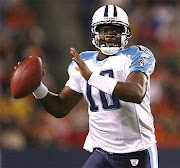































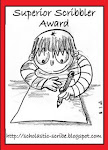







.gif)




















































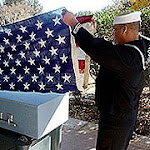


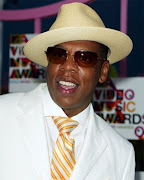



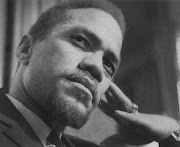


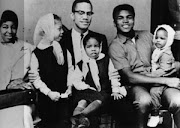








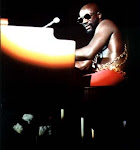








2 comments:
Excellent post. Good stuff. Too bad he died so young. He was one of the last great blues guitarists to have his own sound, tone and technique (IMO).
I like his early stuff but I like the Shelter work as well.
kna: Welcome. And thanks for becoming a follower of daddyBstrong. Looking forward to you coming back and sharing your perspective-- when the feeling moves you. Blessings.
Shady: You sound like a guy who really knows his blues. Hope to hear more from you the future.
Post a Comment